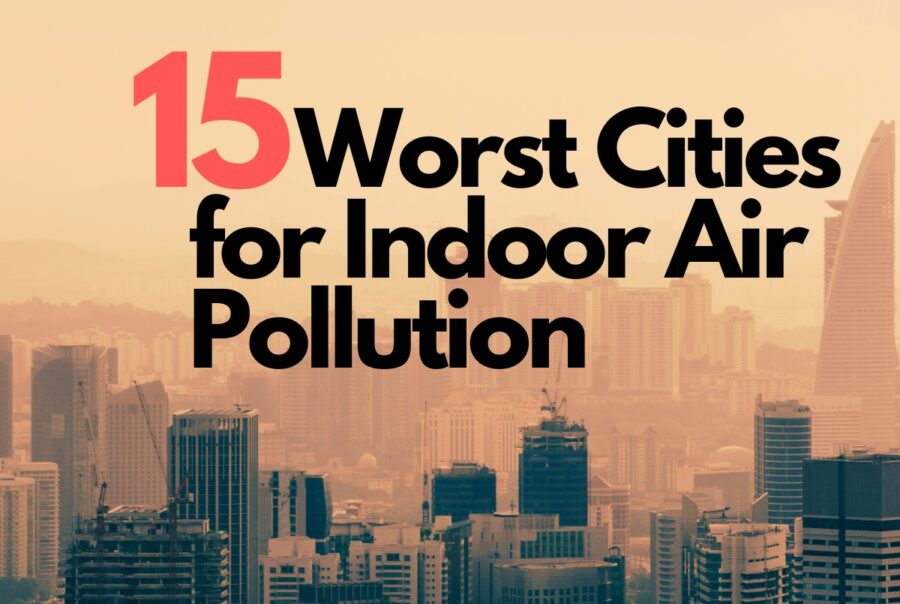
Tracking indoor air pollution on a city basis is not an easy task. While a particular region may have problems with air quality outside, any given space can take steps to measure, filter, and purify its air inside.
Besides, there are many factors that go into indoor air quality that are not a problem with outdoor air—think mold, pet dander, and cooking fumes.
However, we know that air pollutants outside are often the cause of issues inside homes and buildings. While it would be unrealistic to identify all indoor emissions and sources of indoor air quality across the nation, it is possible to identify local areas with a combination of conditions likely to create higher risk of low indoor air quality.
U.S. Cities with the Worst Indoor Air Pollution
We started with the largest 100 MSAs (metropolitan statistical areas) as defined by the 2020 U.S. Census. Then we analyzed as much publicly accessible data as we could find to pinpoint those MSAs with high exposure to pollutants. These include factors like particulate matter, average humidity, forest fires, vehicle exhaust, pollen, and industrial pollution. We also took into account growth rates and development practices to account for probability of overall pollution (see methodology at the bottom of the page).
Unsurprisingly, results tend to show that cities with high growth rates and a lot of sunshine, primarily in the south and southwest, run higher risk of encountering air pollution. But there were a few unexpected findings too. Check out the list below and tell us what you think on our Facebook page.
15. Wichita, Kansas
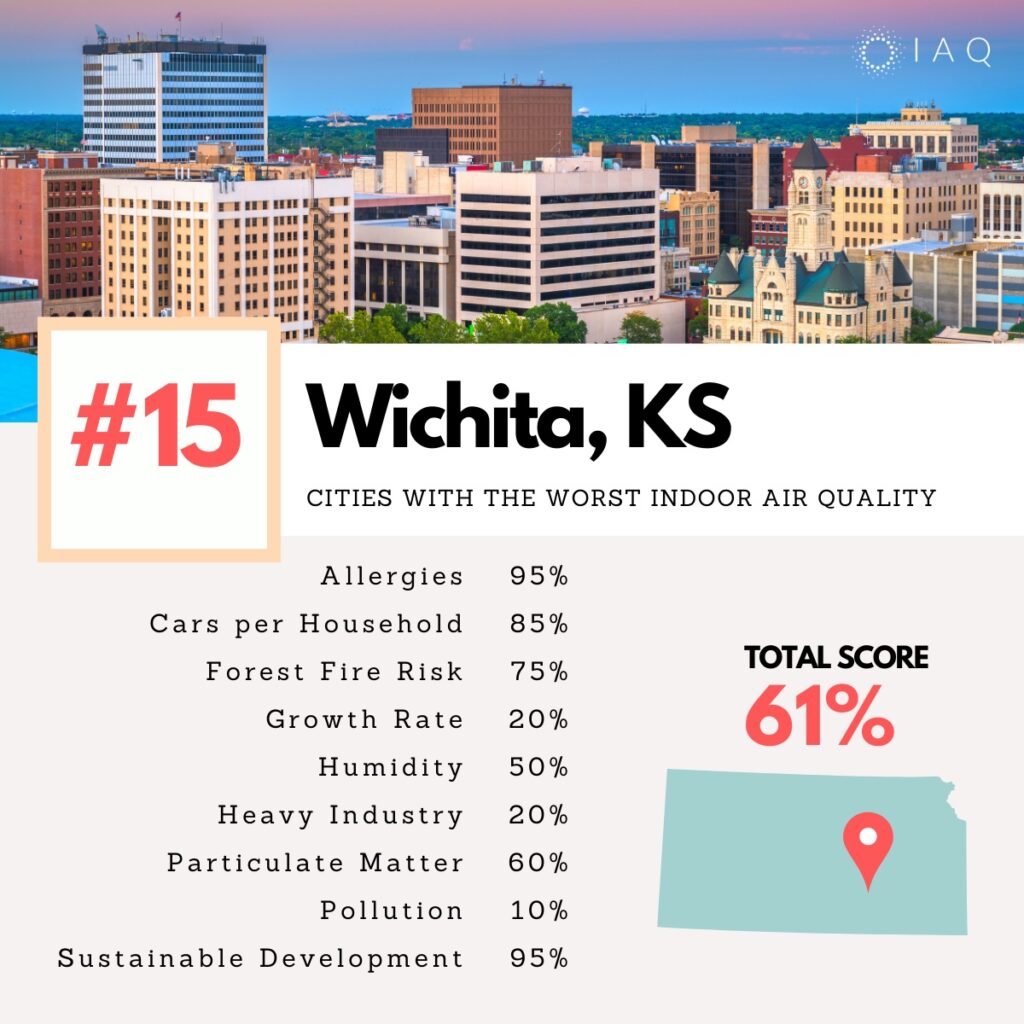
The primary factor landing Wichita on this list is its high prevalence of seasonal allergies. An annually high count of grass, tree and weed pollen has led to Wichita having a relatively large concentration of allergy medical professionals. The city also has a car ownership rate higher than the national average, and has been subject to nearby wildfires in recent years. A critical hub of aviation manufacturing, Wichita has a heavy industry presence which may contribute to local pollution.
14. Sacramento, California
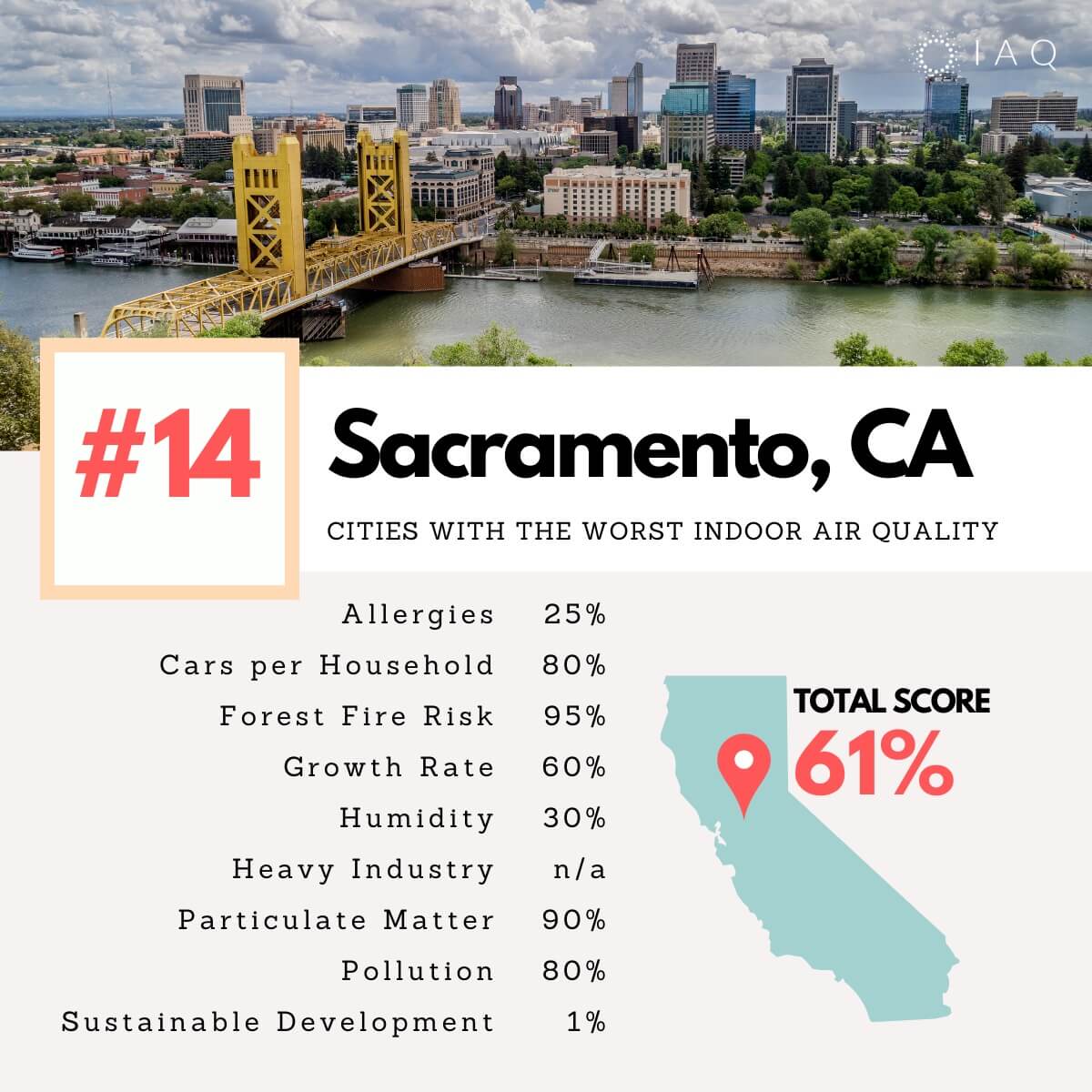
Sacramento is another city where smoke and ash from forest fires have become a common annual concern. As with most cities in California, “Sac-town” has a lot of cars, which means a lot of smog at times. On the other hand, it’s not a particularly bad place for allergies or mold. But rapid growth and industrial investment in recent years contribute to challenges with maintaining a healthy environment.
13. Fresno, California
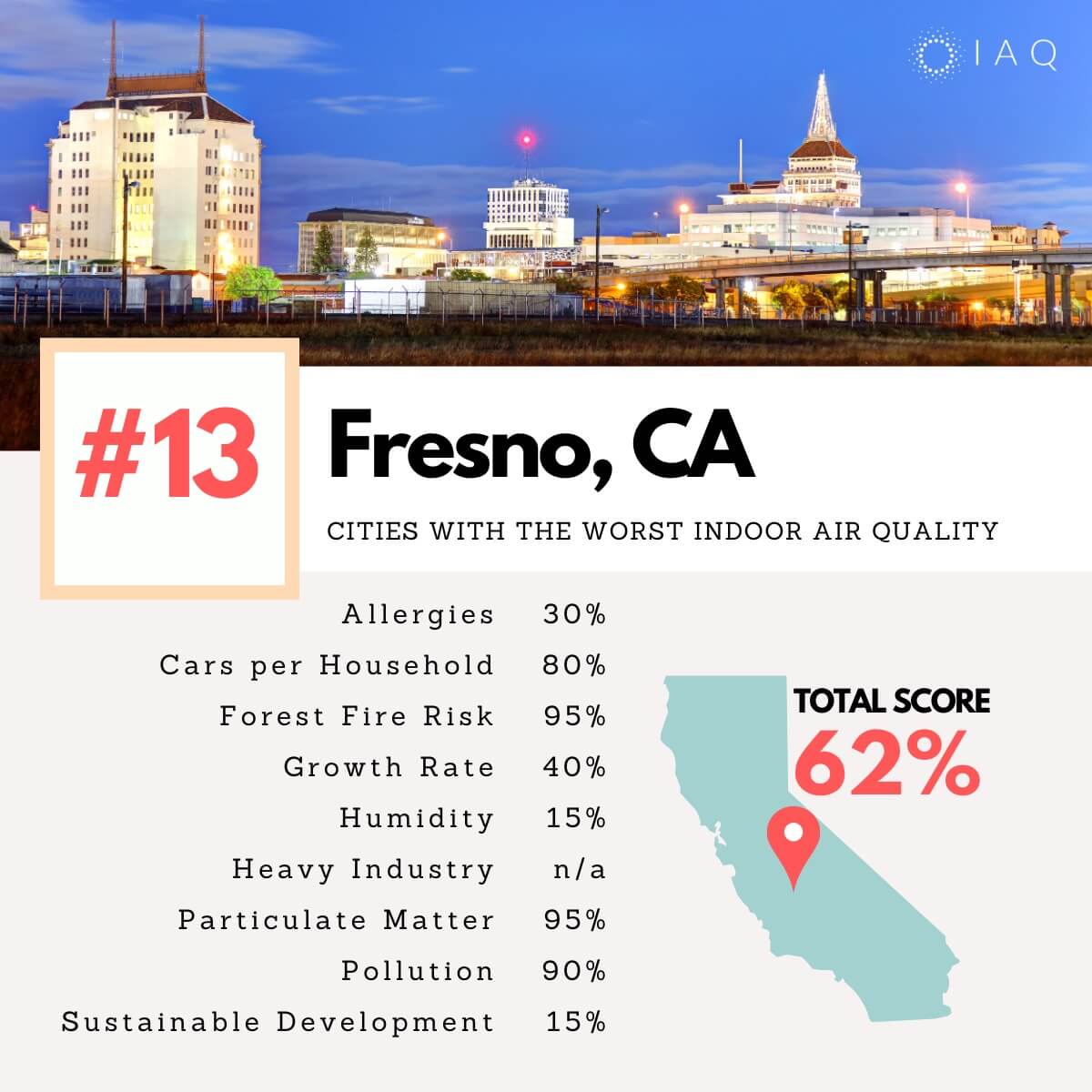
Like a number of cities on this list, Fresno lies in the central valley of California, a fertile agricultural region that also suffers from frequently polluted air. Partly due to being situated between the Sierra Nevada and coastal mountain ranges, particulate matter and other contaminants from farming, manufacturing, and transportation have a habit of looming over the Fresno metro area. It doesn’t help that the city sits in a high risk forest fire zone, where falling ash has become a common sight in late summer.
12. Los Angeles, California
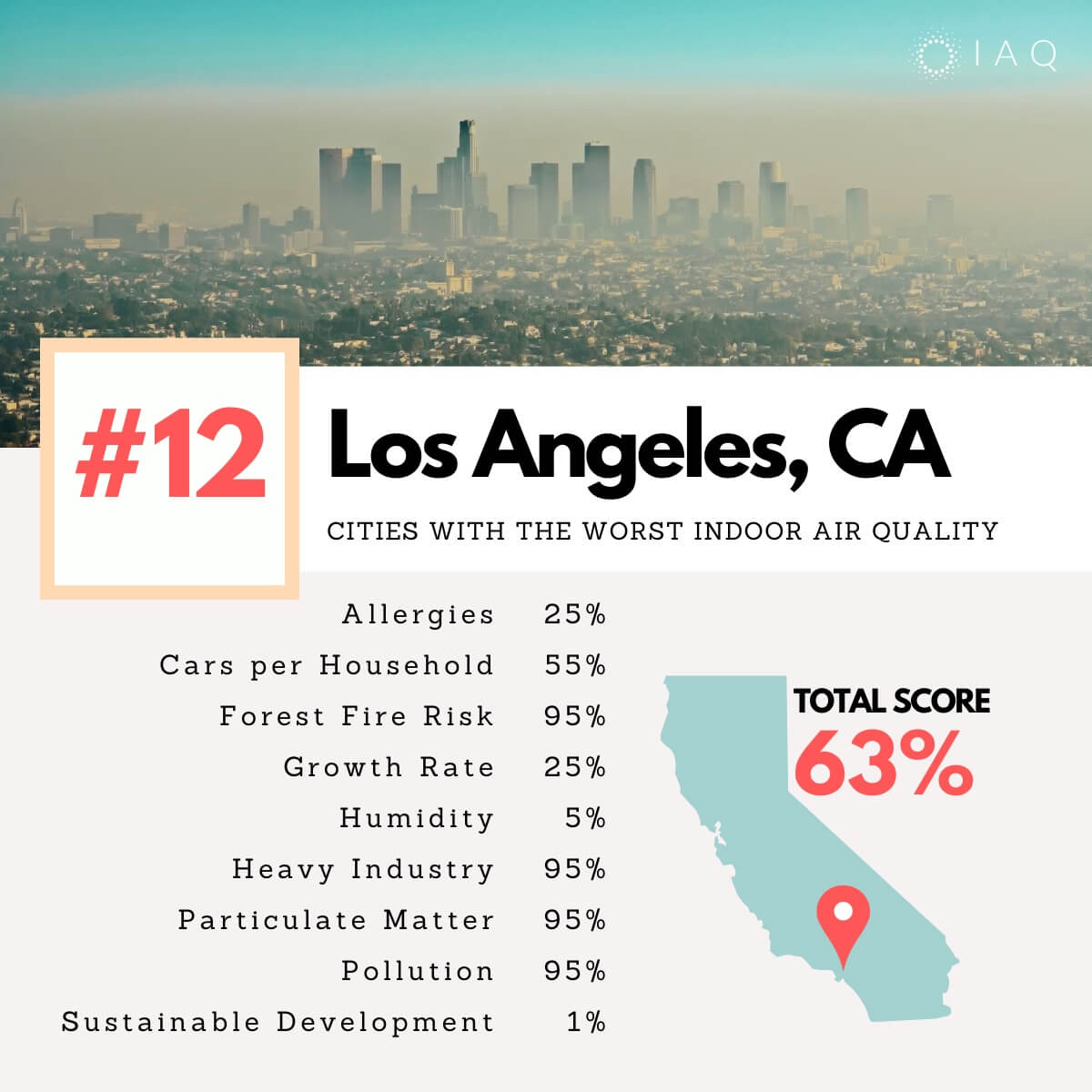
Farther south in California, Los Angeles is a city that is no stranger to conversations about air pollution. With a huge industrial presence, massive driving population, and ever-present forest fire risk, there are always potential challenges to air quality in LA. On the bright side, the city has made great strides in cleaning up its air, investing heavily in environmentally friendly development techniques.
11. San Antonio, Texas
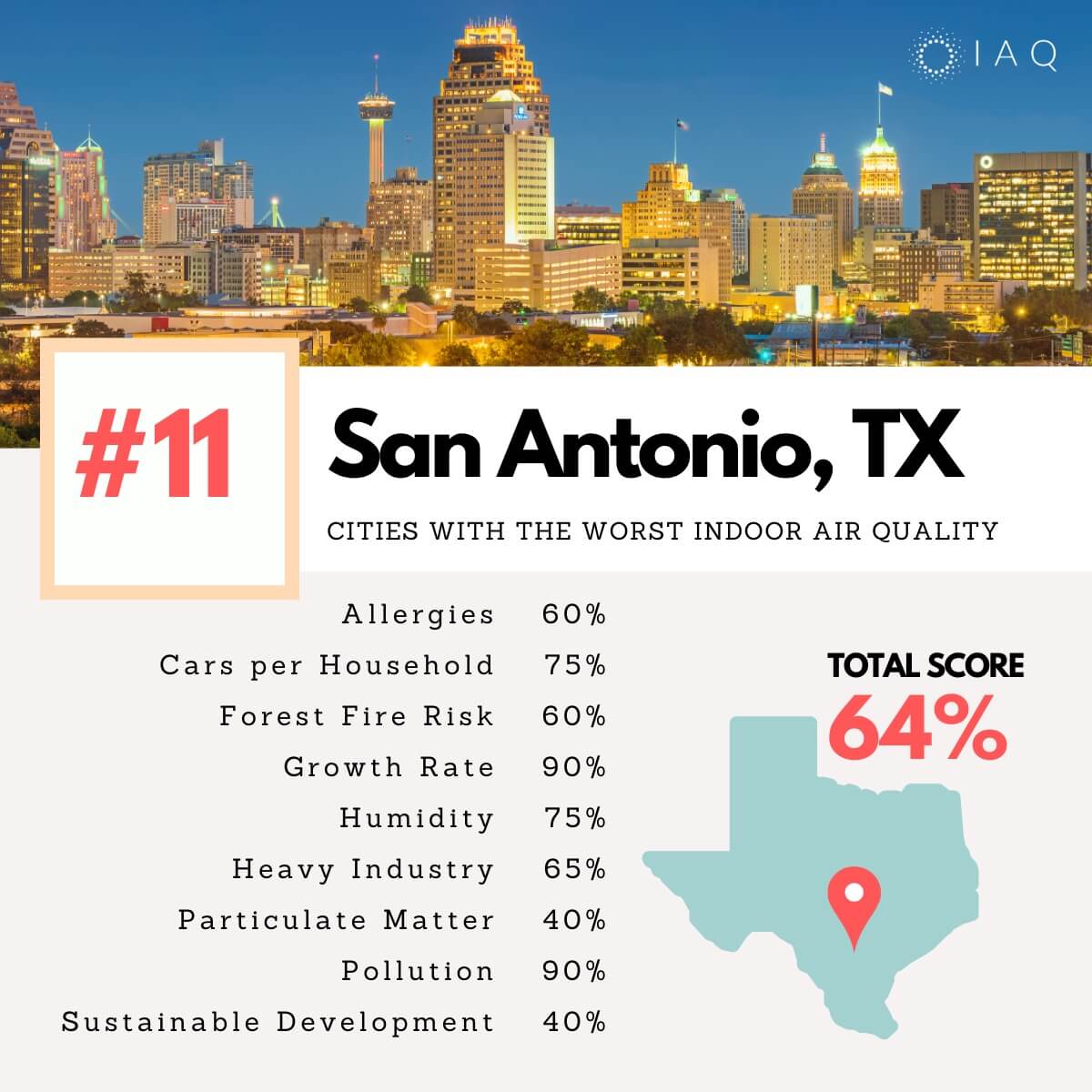
The “Alamo City,” San Antonio, is a place of rich cultural history, a thriving economy, and abundant Texas sunshine. As one of the fastest-growing cities in the USA, it offers exciting opportunities for any resident. With this popularity, however, the city also heavy traffic, ongoing construction, and sustainable growth issues. The high humidity and notorious “cedar fever” allergy season pose additional hurdles, making air quality management a going concern.
10. Cape Coral, Florida
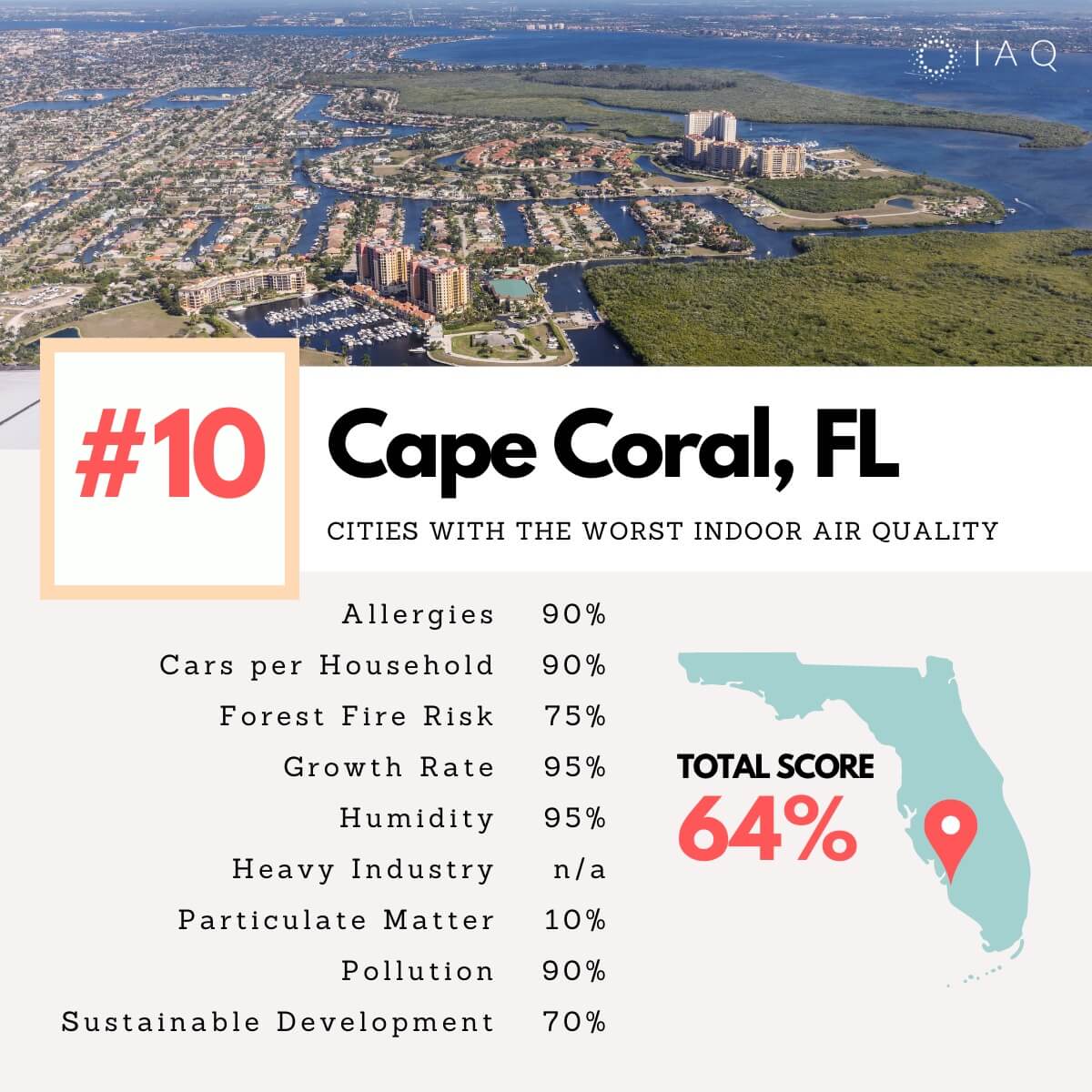
Along with Fort Meyers and Naples, the Cape Coral metro area boasts all the trademark pros and cons of Florida living. On the high side, you have the beach, constant sunshine, and no state income tax. But Floridians must also contend with typically oppressive humidity, seasonal allergies, and a massive influx of new residents and tourists, which often contribute to traffic and pollution.
9. Orlando, Florida
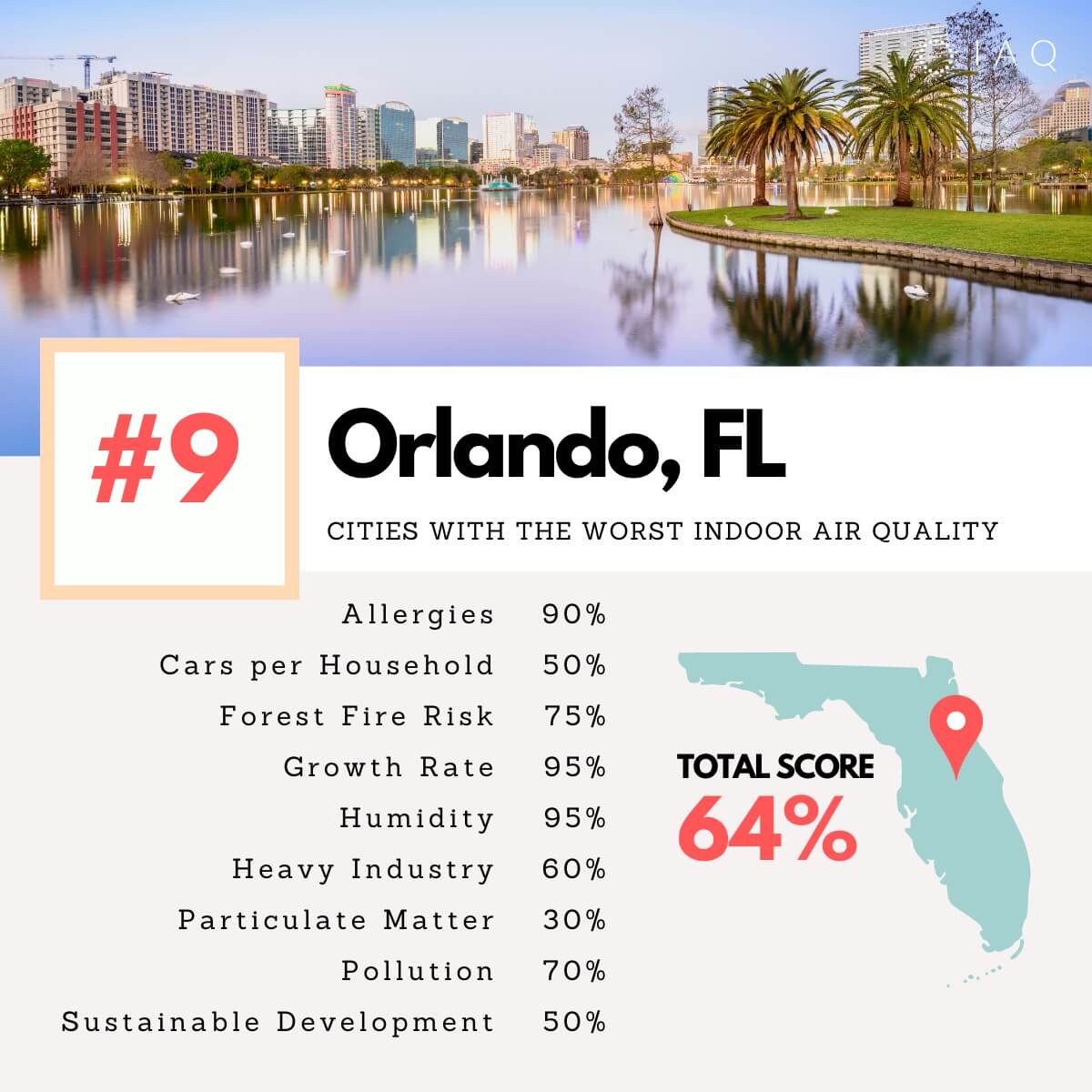
Orlando tells a similar story. Rapid growth reflects the city as a place where people want to be. But it has its fair share of air quality challenges, too. A low car ownership rate and relatively moderate pollution are offset by a perennially bothersome allergy season and high average annual humidity. Forest fires have become a problem in Florida in recent years, which means smoke and particulate matter can create additional indoor air quality concerns.
8. Dallas, Texas
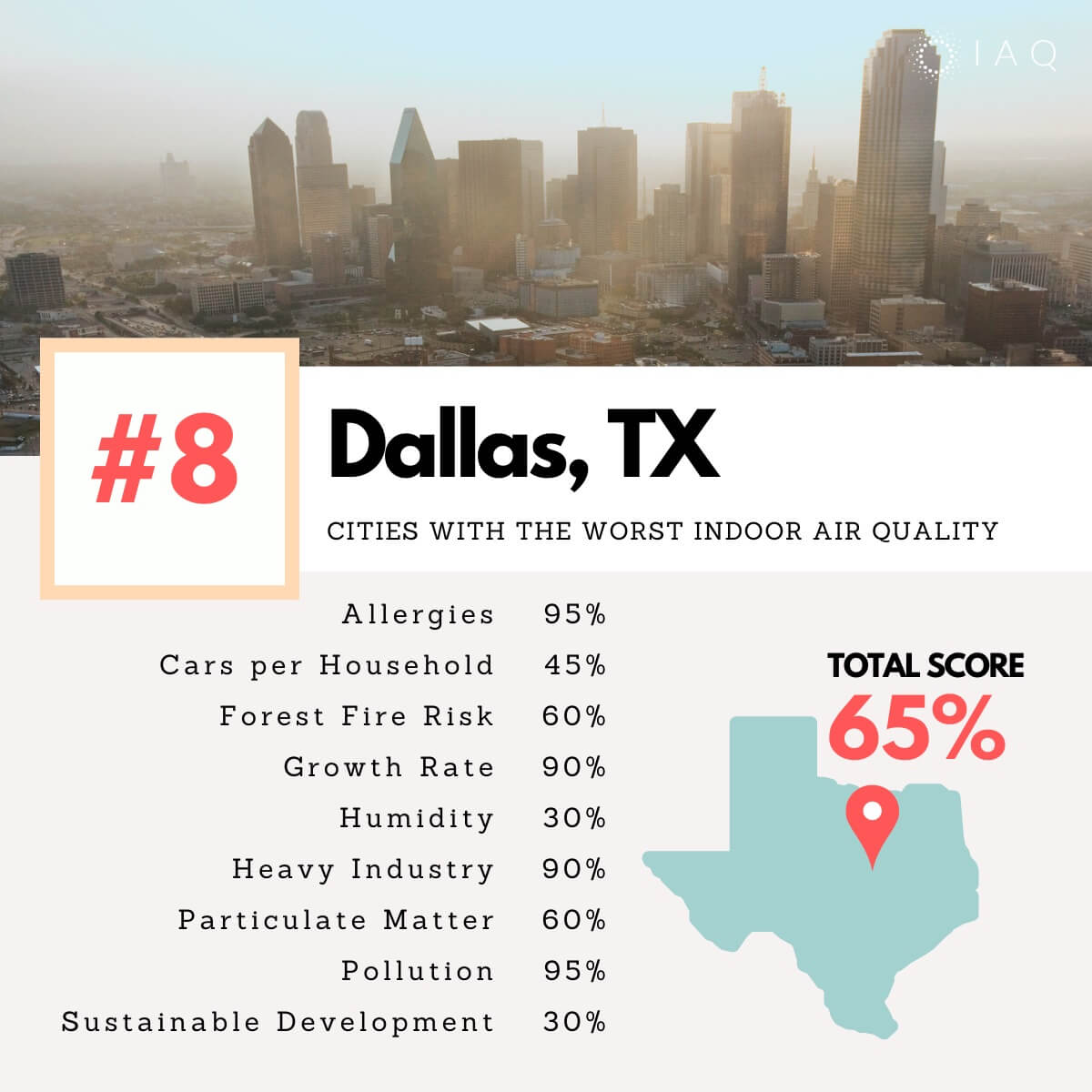
The Dallas-Fort Worth metro area is known for its wide freeways, energy-driven economy, and hot Texas summers. Unfortunately these are some of the common ingredients that create a risk of air quality issues. A high pollen count and extremely elevated levels of humidity are two more of them. On the positive side, “DFW” has made strides toward reducing pollution levels in recent years.
7. Stockton, California
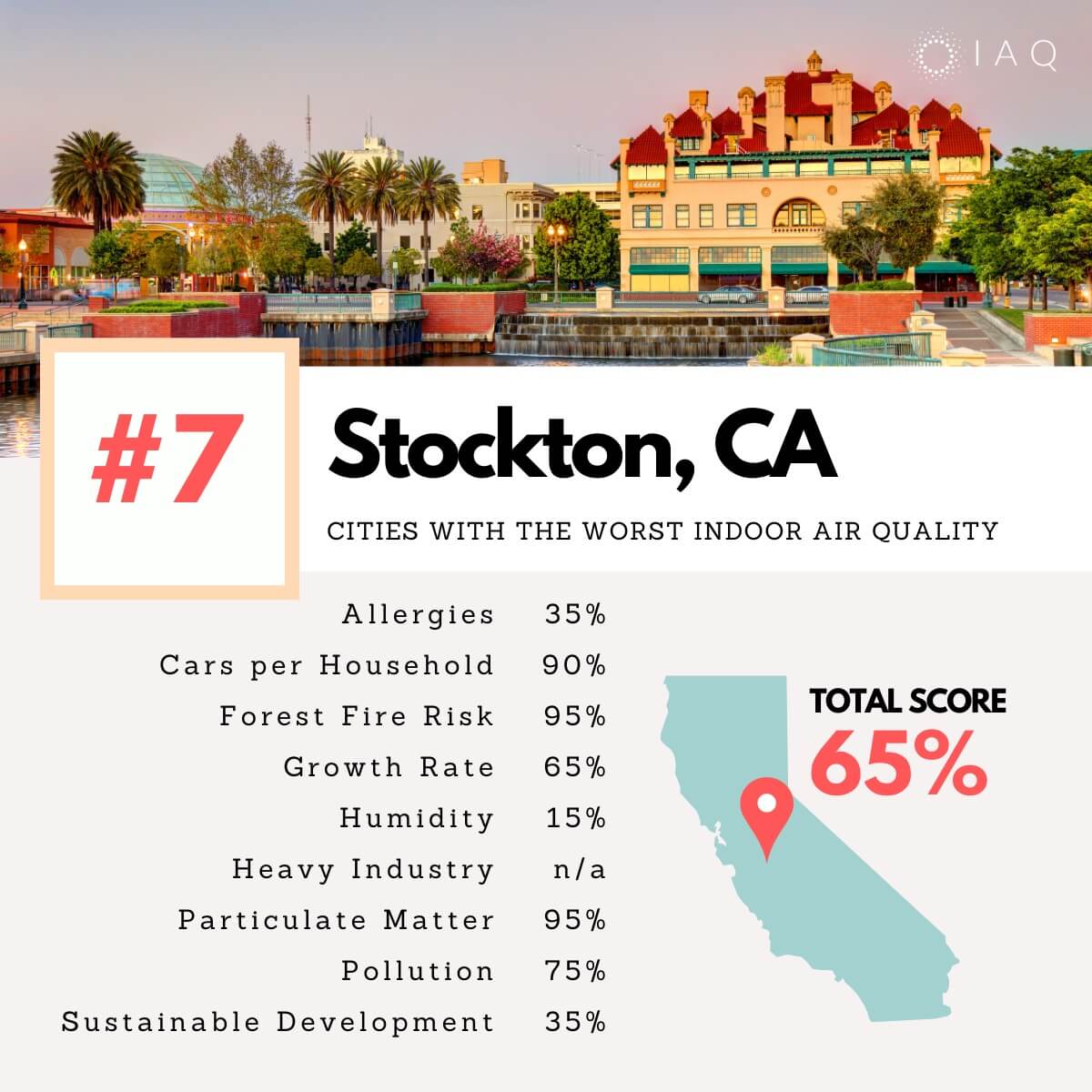
The Stockton metro encompasses a lush agricultural area in the northern San Joaquin Valley, centrally located near the Bay Area, California’s central valley, and the state capitol in Sacramento. This location brings a lot of cars and traffic to the city, which contribute to a high level of air pollution. Additionally, Stockton has one of the highest average levels of particulate matter in the country. This is no doubt exacerbated by the all-too-common reality of wildfires that plague this section of the state.
6. Bakersfield, California
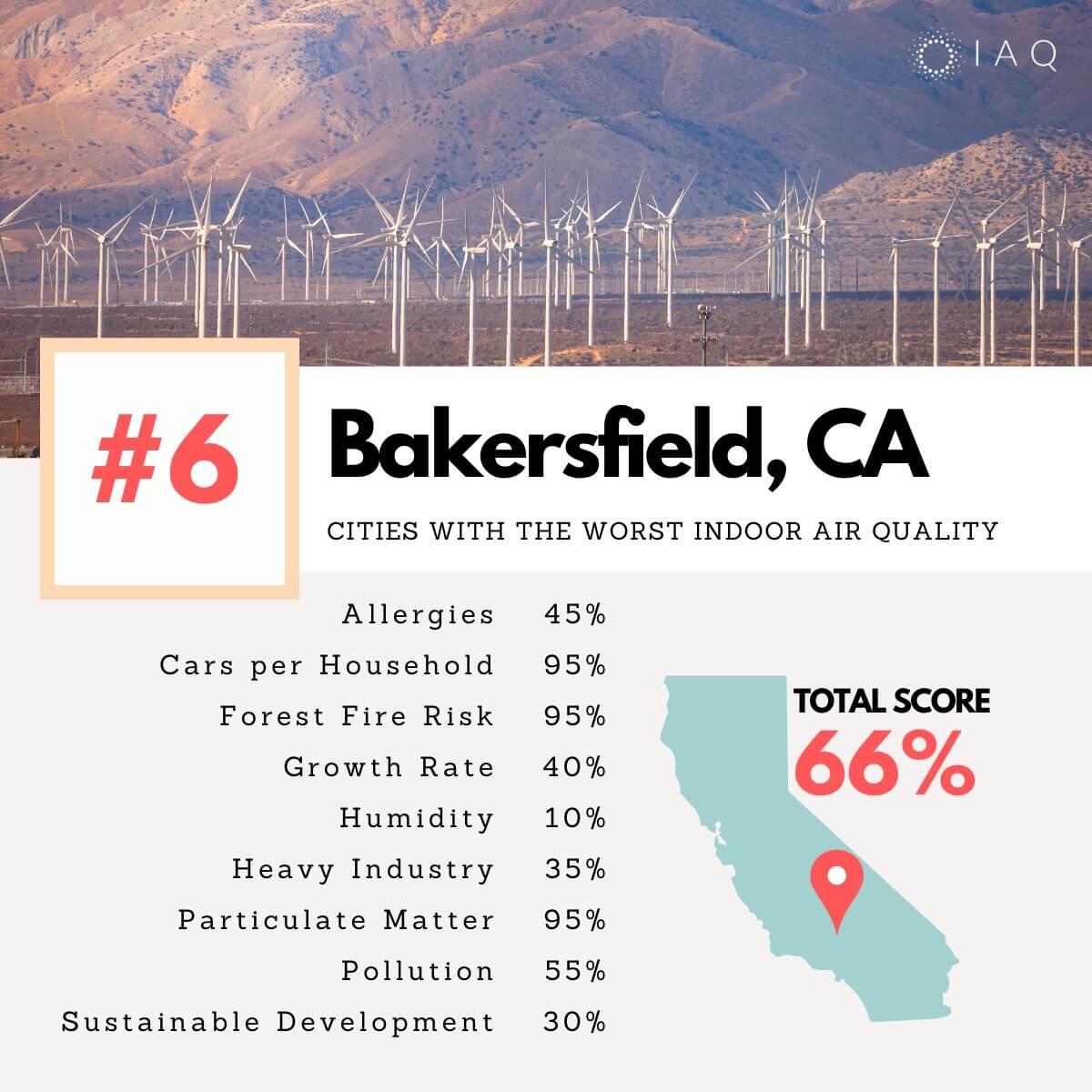
Having more cities (5) than any other state on this list, California is a place where residents encounter numerous common air quality challenges. They include forest fires, pollution originating from industry and traffic, and a mountainous geography that frequently traps contaminants within basins and valleys. Sitting at the foothills of a large mountain range, Bakersfield exemplifies these issues, as it boasts the highest car ownership rate in our dataset, has experienced significant impacts from forest fires, and relies on agricultural and industrial production as pillars of its economy.
5. Tulsa, Oklahoma
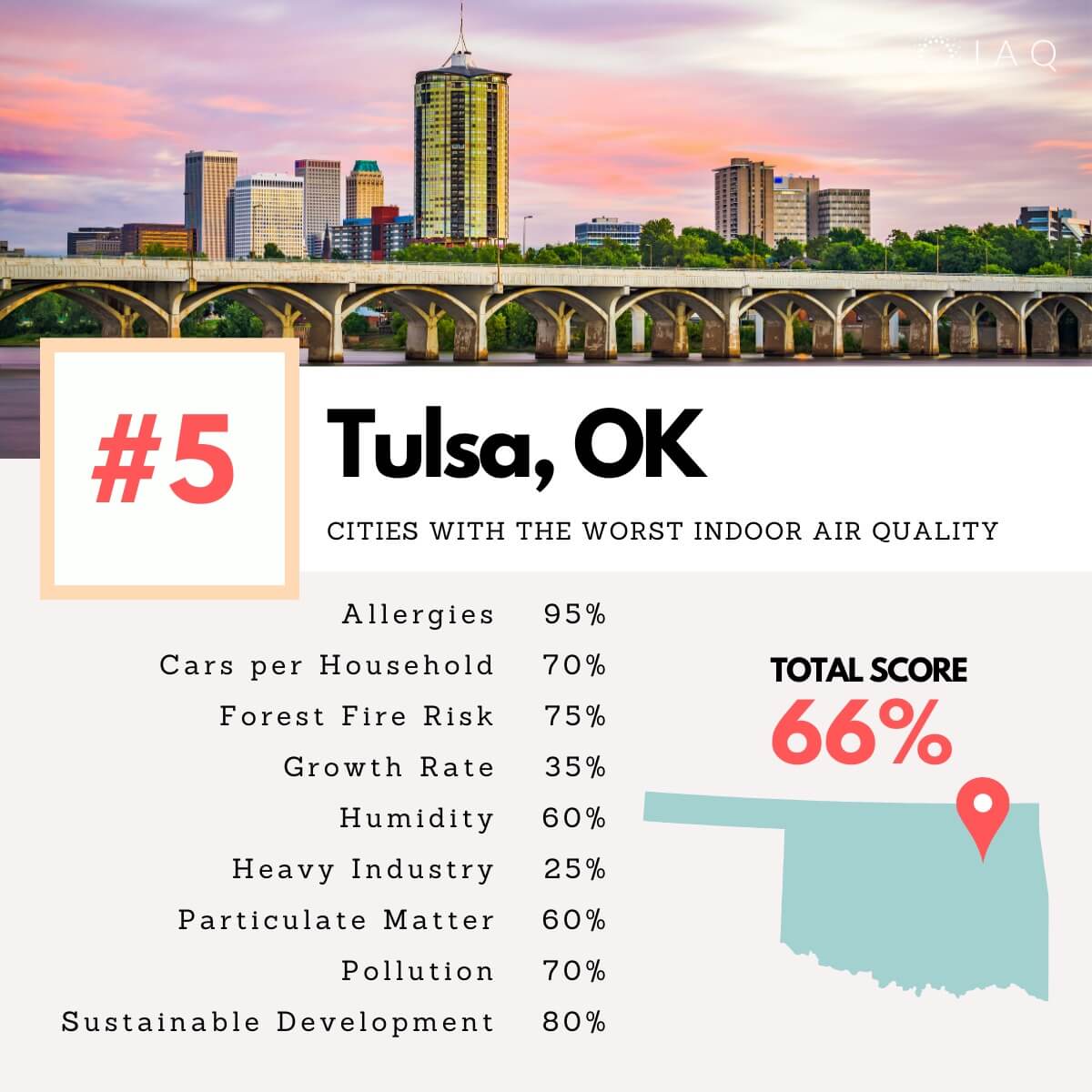
The Tulsa metro experiences a combination of factors that contribute to low quality air. Unpredictable weather characteristic of the south central U.S. brings rapid changes in temperature and humidity. For this reason, Tulsa sits in an area that is no stranger to drought and forest fires, as well as excessive wetness that can invite allergies and mold growth. Tulsa also has strong industrial manufacturing and energy sectors, which create an ongoing risk of chemical contamination.
4. Phoenix, Arizona
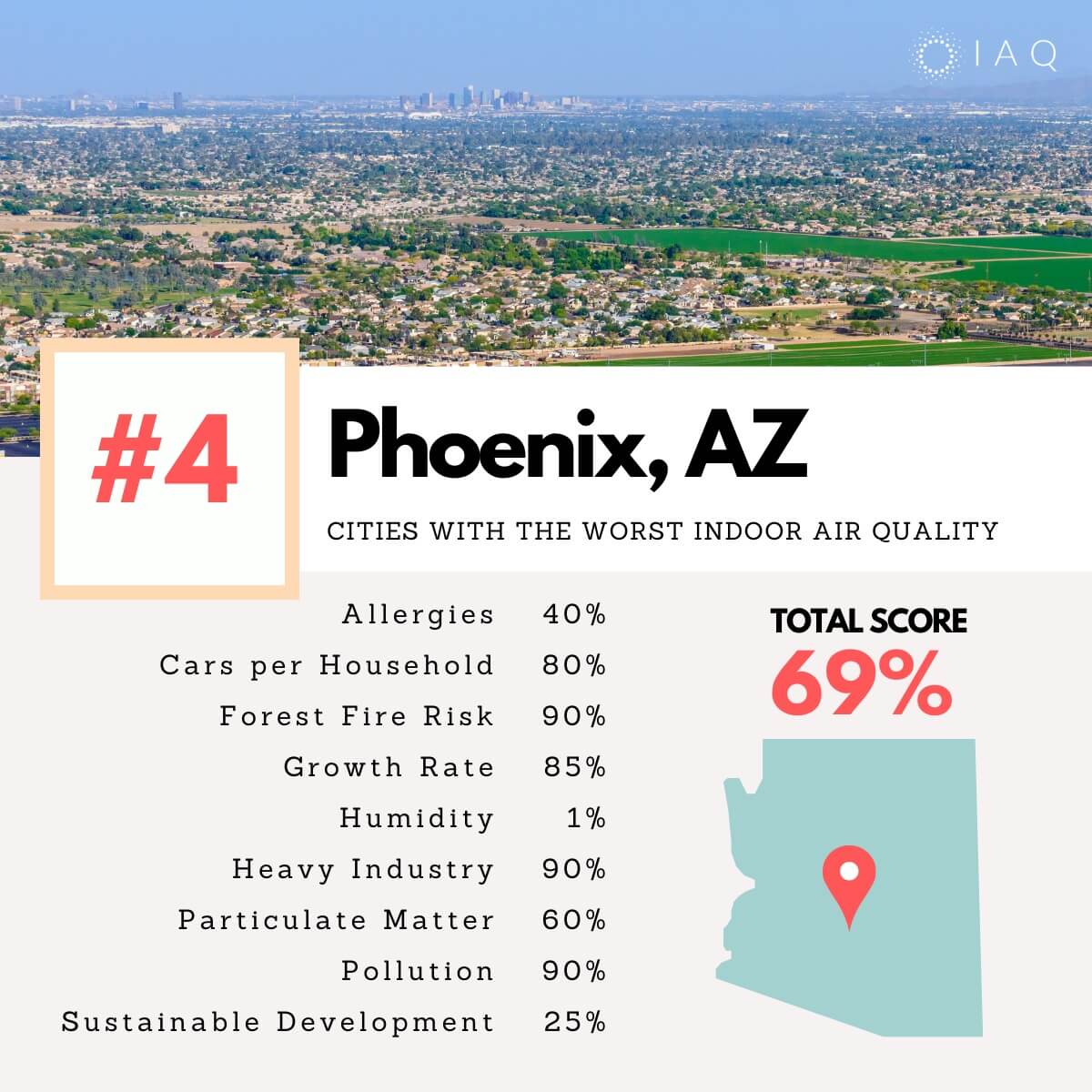
The Phoenix metro area is renowned for its arid and scorching desert climate, characterized by dryness and high temperatures throughout much of the year. Given its vast size, owning a car is essential for residents in this city. Consequently, Phoenix exhibits a notably high average level of particulate matter in the air. Allergies are not a major concern for most residents, as the local climate isn’t ideal for trees and grass, and low humidity means low risk of mold and other biological pollutants. But forest fires and smog are common in the valley of the sun.
3. McAllen, Texas
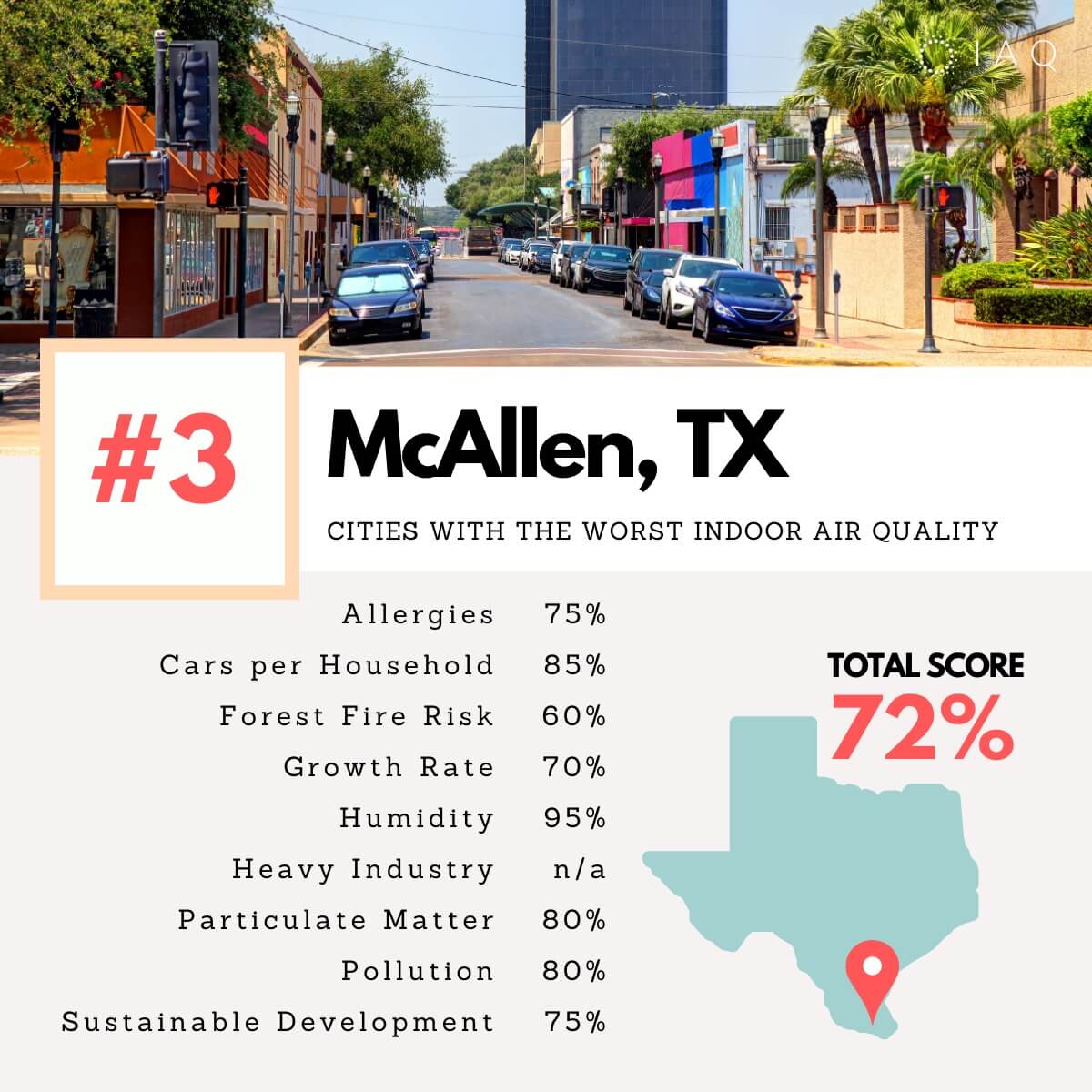
McAllen and its suburbs are prone to low air quality due to the presence of severe seasonal pollen allergies, which is often a concern for residents’ respiratory health. The region’s high concentration of vehicles compounds air quality issues and contributes to increased pollution. Located in a highly trafficked area along the Mexican border, McAllen is a hub of manufacturing and transportation, which lead to congestion and significant particulate matter emissions.
2. Oklahoma City, Oklahoma
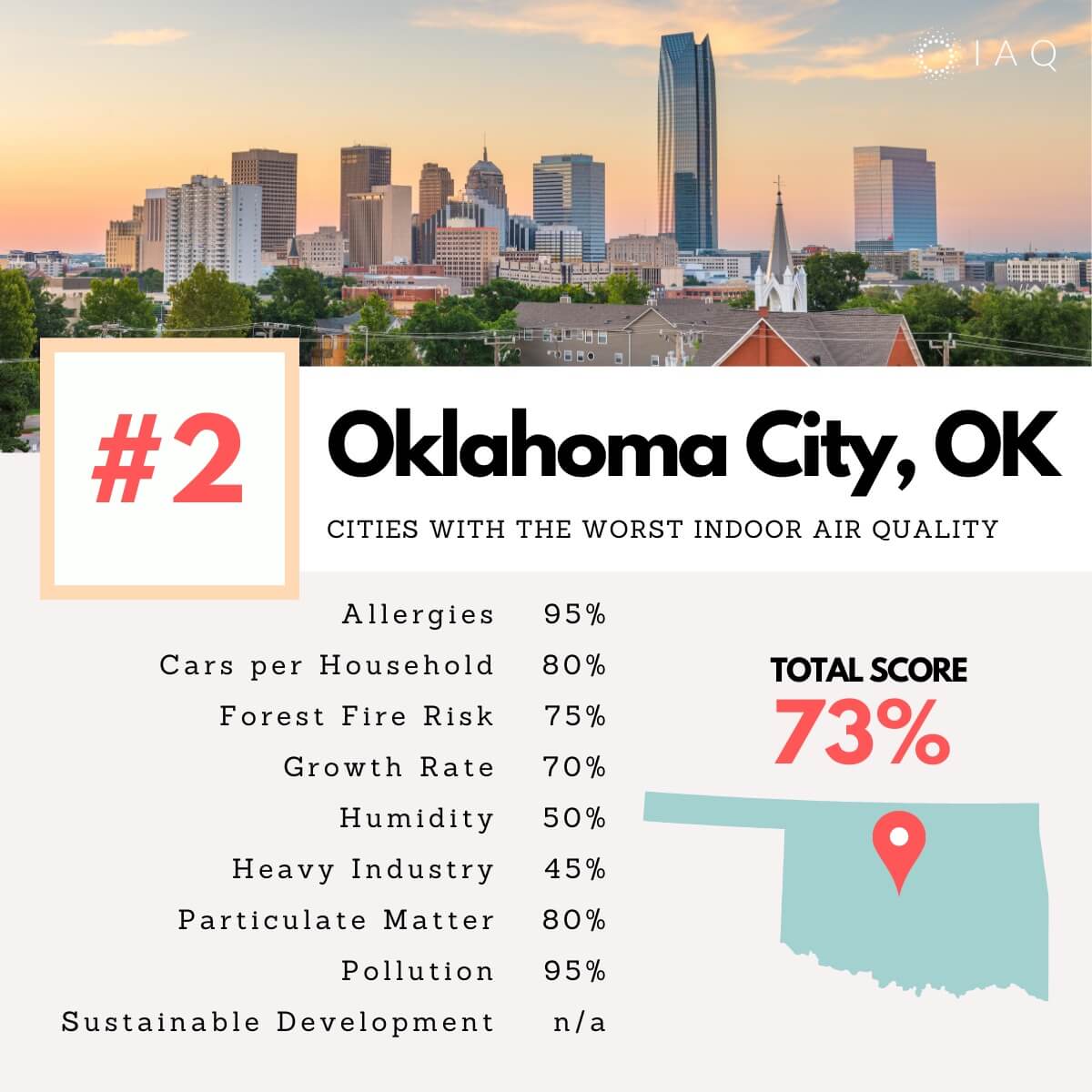
Oklahoma City is a rapidly-growing metropolitan area with a thriving economy. Unfortunately, the city scored on the higher end in almost every category we looked at. “OKC” has a high car ownership rate, is known for a tough allergy season, and frequently suffers from high levels of particulate matter. The city’s average annual humidity is a bright spot compared to other cities in the dataset. But the other side of that coin is Oklahoma is in the top quartile in the nation in terms of wildfire risk.
1. Houston, Texas
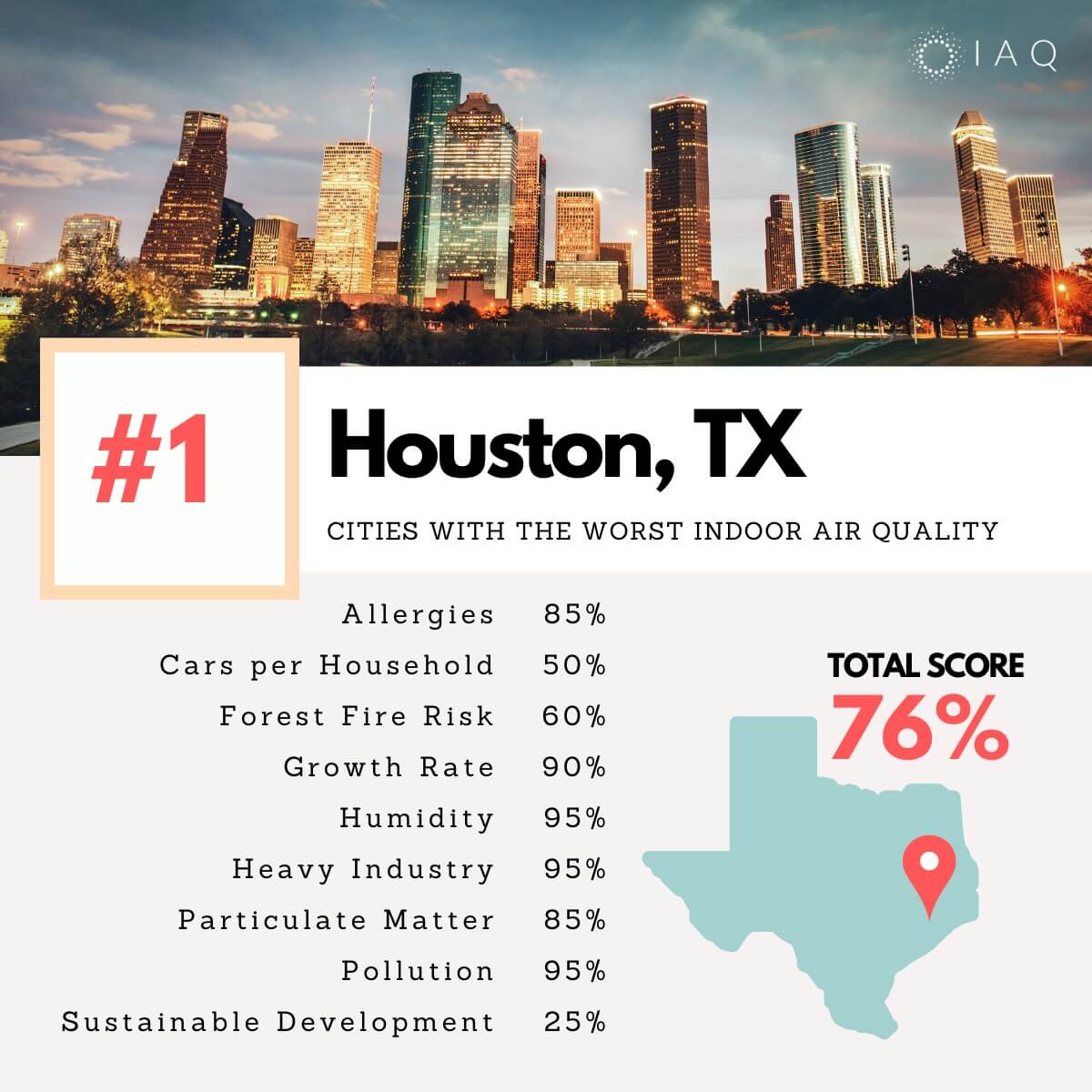
Claiming the dubious distinction of being in the first position on our list, Houston is a sprawling city renowned for its elevated humidity levels and congested roadways. Residents often contend with uncomfortable seasonal allergies and the associated challenges of pollen. With a high concentration of industrial jobs, Houston serves as a vital economic center that has experienced rapid growth over the past five years. As an energy capital, living in Houston comes with the ever-present risk of high pollution and particulate matter in the air.
Methodology
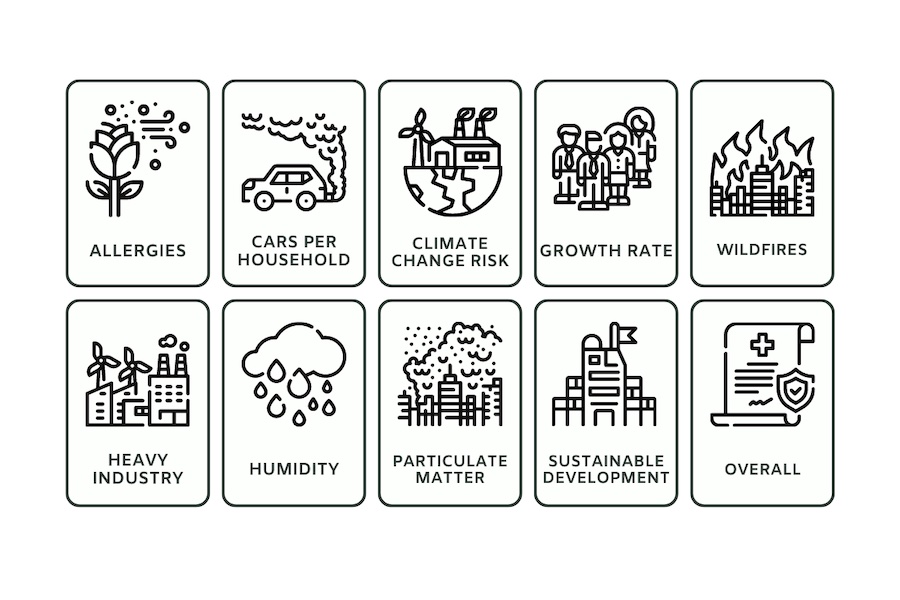
Our research aimed to assess the risk of indoor air pollution in the largest U.S. MSAs by analyzing and weighting nine key factors in each city, including:
- Average annual particulate matter (20%) – [Source]
- Average number of cars per household (15%) – [Source]
- Percentage of nearby acres burned in forest fires (15%) – [Source]
- Allergies rating (12.5%) – [Source]
- Overall pollution ranking (10%) – [Source]
- Average annual humidity (10%) – [Source]
- Industrial presence based on number of jobs (7.5%) – [Source]
- Sustainable development rank (5%) – [Source]
- 5-year growth rate (5%) – [Source]
We scored each city on these criteria relative to the other cities on the list using percentiles. We then weighted these scores toward danger level per the percentages noted above. Scores were added and ranked. Please note not every MSA received a score across all criteria. Some MSAs may have overlapping populations.
Note: appearance on this list does not mean residents in this city necessarily face indoor air pollution. Indoor air quality is highly variable based on factors beyond what’s possible to rank using data. To know what’s in your indoor air, consider purchasing an IAQ, which measures more than 20 indoor air pollutants.
See also:
5 U.S. States With the Highest Risk of Mold
Shocking Facts About Indoor Air Pollution







